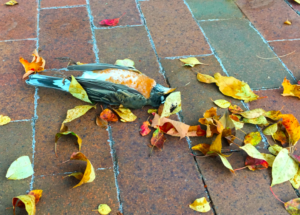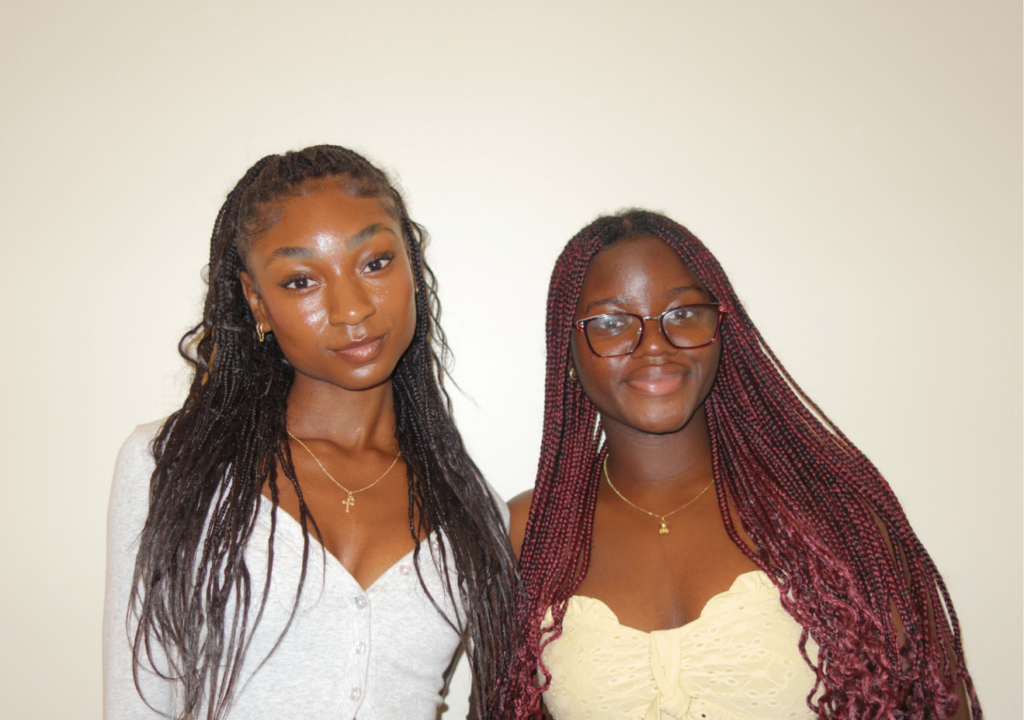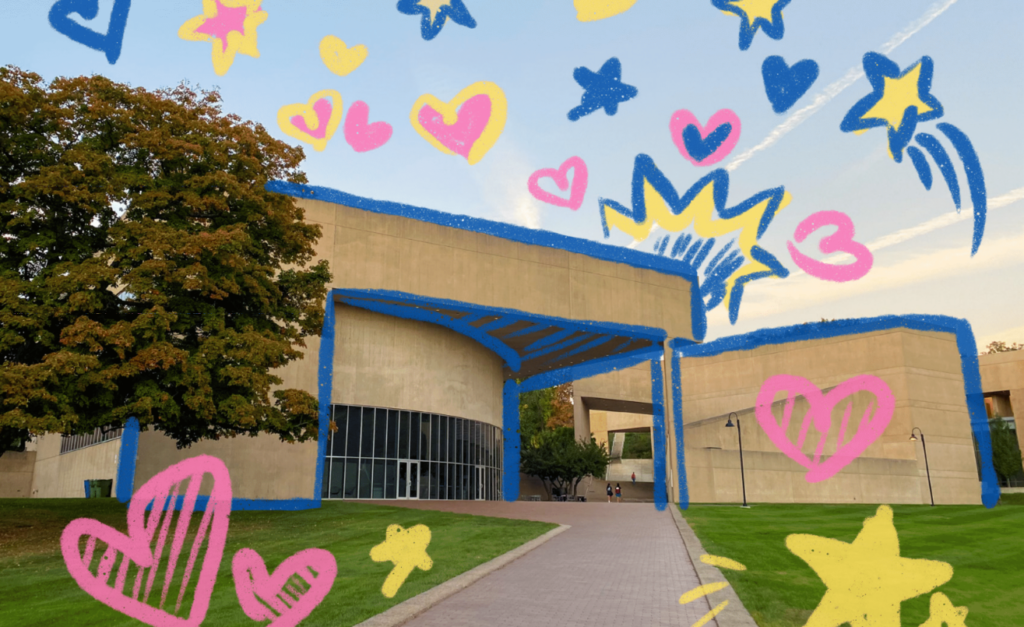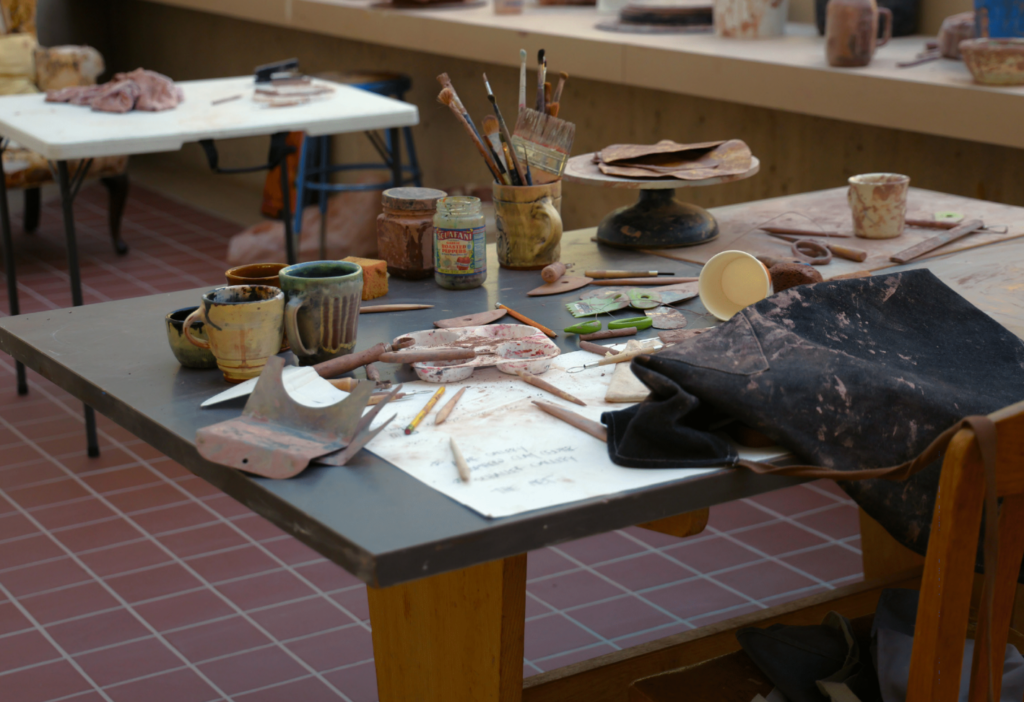Anyone who has been in the PMAC in the past few weeks may have noticed a strange occurrence: dead birds lying on the sides of the building.
Questions regarding these sightings have permeated campus. Ms. Kalya Yannatos, Director of the Arts, has been able to pinpoint the cause of these unfortunate incidents: Many of these birds appear to be on their migration south, and on their way have been pausing on a large tree in the center of the PMAC as it grows many fruits during this time of year. They then fly into the PMAC’s glass walls. “It’s a feasting orgy for these birds but then they go ‘bang!’ It’s absolutely traumatic,” Yannatos said.
The dead birds primarily consist of cedar waxwings, however, there have also been a couple of robins as well as a single yellow-birded species that no one has successfully identified.
Art student William Robertson ’20 said, “It’s ironic how the PMAC, a building dedicated to celebrating the beauty that life has to offer, is currently surrounded by scores of dead birds.”
Robertson has had many encounters with the animals in the PMAC. He recalls being horrified when seeing a surreal amount of carcasses on his way to a capella. “I was surprised nobody had done anything with them — they must have died recently because I can’t imagine people would simply leave them there. I went into a cappella a little shaken, only to be disrupted a few minutes in by a ‘thunk!’ against the glass window. We ran outside and saw the poor bird, bashed and shocked, twitching and unable to right itself. With help from Kalya, we were able to get it back on its feet again; afterward, we made a sort of mass grave for the other dead birds around the building, throwing their limp bodies in a pile in the leaves. Not only was this disruptive to the rehearsal, but it was also incredibly disturbing — by having fruitful trees right next to crystal-clear glass walls, it makes sense that birds would injure themselves.”
Robertson thinks Choate should take action. He said, “If you ask me, I think it’d be irresponsible to do nothing; rather, we should replace the trees that attract all the birds to that area. I wouldn’t suggest changing the side of the PMAC, but we should take any reasonable steps we can in order to help save the innocent birds flying to their death at the hands of I.M. Pei’s architecture.”
Robertson is not alone in his discomfort. “I’ve definitely seen that down in the PMAC,” Supriya Chang ’20 said. “It reminded me of my house in New Jersey, where birds would try to fly into our house because they didn’t realize there was a window.”
Many of the Arts Concentration students have tried to prevent these casualties from occurring. Ms. Yannatos explained, “The Arts Con kids have been trying to create a silhouette and hanging it over the windows, because silhouettes are supposed to signal to the birds. We would have to hang silhouettes over entire panels of windows in order to prevent future incidents.”
Many families who come on tours visit the PMAC, and seeing dead animals lying on the sides of the building is certainly not the impression and reputation Choate hopes to achieve. Ms. Yannatos has been thinking of solutions to solve this issue. “The problem is the trees,” she said. “The birds won’t be so attracted to the trees if they weren’t fruit bearing. What we need to do is to replace these trees and any trees close to the windows with ones that don’t bear fruit because that’s what’s attracting them. We may then get an incident now and then, but it definitely would not be what it is like now. Seriously, it feels like 20 birds a day.”
Colony Hall will open next fall, and the type of trees planted on the sides of the building will be critical.





